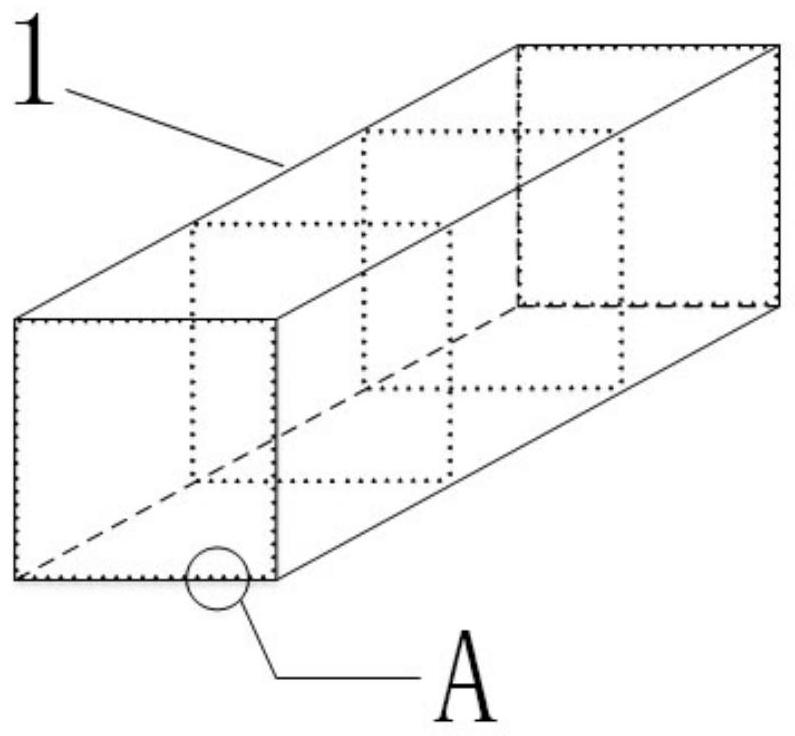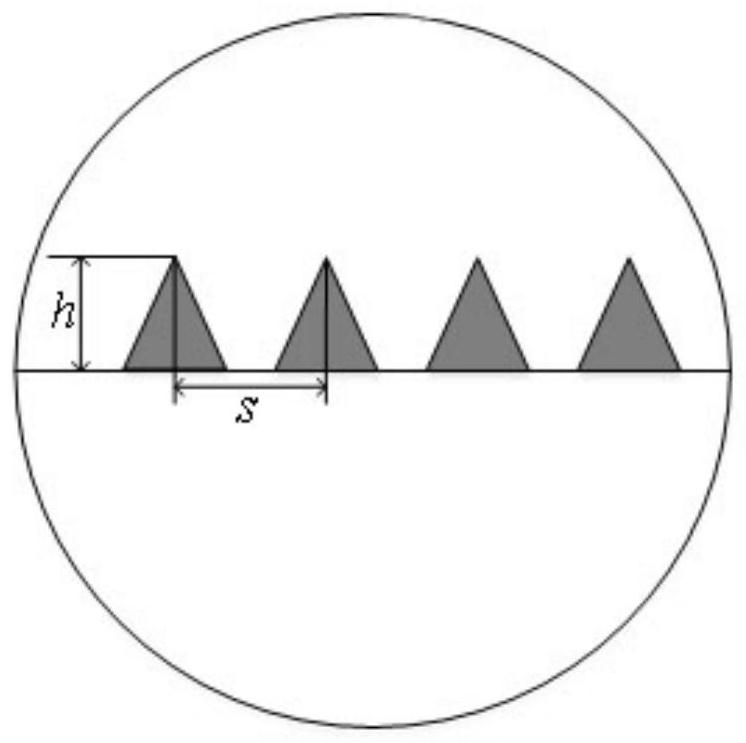Method for reducing resistance of boiler smoke air duct system
A technology of flue gas duct and resistance, which is applied in the direction of combustion method, combustion product treatment, exhaust gas device, etc., and can solve the problem of low boiler operation efficiency
- Summary
- Abstract
- Description
- Claims
- Application Information
AI Technical Summary
Problems solved by technology
Method used
Image
Examples
specific Embodiment approach 1
[0030] Specific implementation mode one: refer to figure 1 and figure 2 Specifically explaining this embodiment, a method for reducing the resistance of a boiler flue duct system described in this embodiment includes the following steps:
[0031] Step 1: Determine the height h of the V-shaped spoiler fins and the distance s between two adjacent V-shaped spoiler fins according to the thickness of the fluid turbulence boundary layer in the smoke duct;
[0032] Step 2: Obtain control parameters by controlling the ratio of dimensionless parameters, namely h / s, and combining CFD values;
[0033] Step 3: Arrange V-shaped spoiler fins in the flue gas duct according to the control parameters.
[0034] The specific idea of this application is:
[0035] Arrange V-shaped spoiler fins in the smoke duct 1, such as image 3 As shown, the fluid flow in the flue gas duct is disturbed, so as to achieve the purpose of reducing the frictional resistance between the fluid and the inside of...
specific Embodiment approach 2
[0046] Embodiment 2: This embodiment is a further description of Embodiment 1. The difference between this embodiment and Embodiment 1 is that the step of obtaining the height h of the V-shaped spoiler fins in Step 1 is:
[0047] Firstly, the fluid flow velocity in the flue gas duct is obtained, and then the thickness of the turbulent boundary layer in the flue gas duct is obtained according to the fluid flow velocity in the flue gas duct, and the height h of the V-shaped spoiler fins is determined according to the thickness of the turbulent boundary layer in the flue gas duct.
specific Embodiment approach 3
[0048] Embodiment 3: This embodiment is a further description of Embodiment 2. The difference between this embodiment and Embodiment 2 is that the thickness of the turbulent boundary layer in the flue duct is obtained by calculating the turbulent boundary layer of a flat plate.
PUM
 Login to View More
Login to View More Abstract
Description
Claims
Application Information
 Login to View More
Login to View More - R&D
- Intellectual Property
- Life Sciences
- Materials
- Tech Scout
- Unparalleled Data Quality
- Higher Quality Content
- 60% Fewer Hallucinations
Browse by: Latest US Patents, China's latest patents, Technical Efficacy Thesaurus, Application Domain, Technology Topic, Popular Technical Reports.
© 2025 PatSnap. All rights reserved.Legal|Privacy policy|Modern Slavery Act Transparency Statement|Sitemap|About US| Contact US: help@patsnap.com



